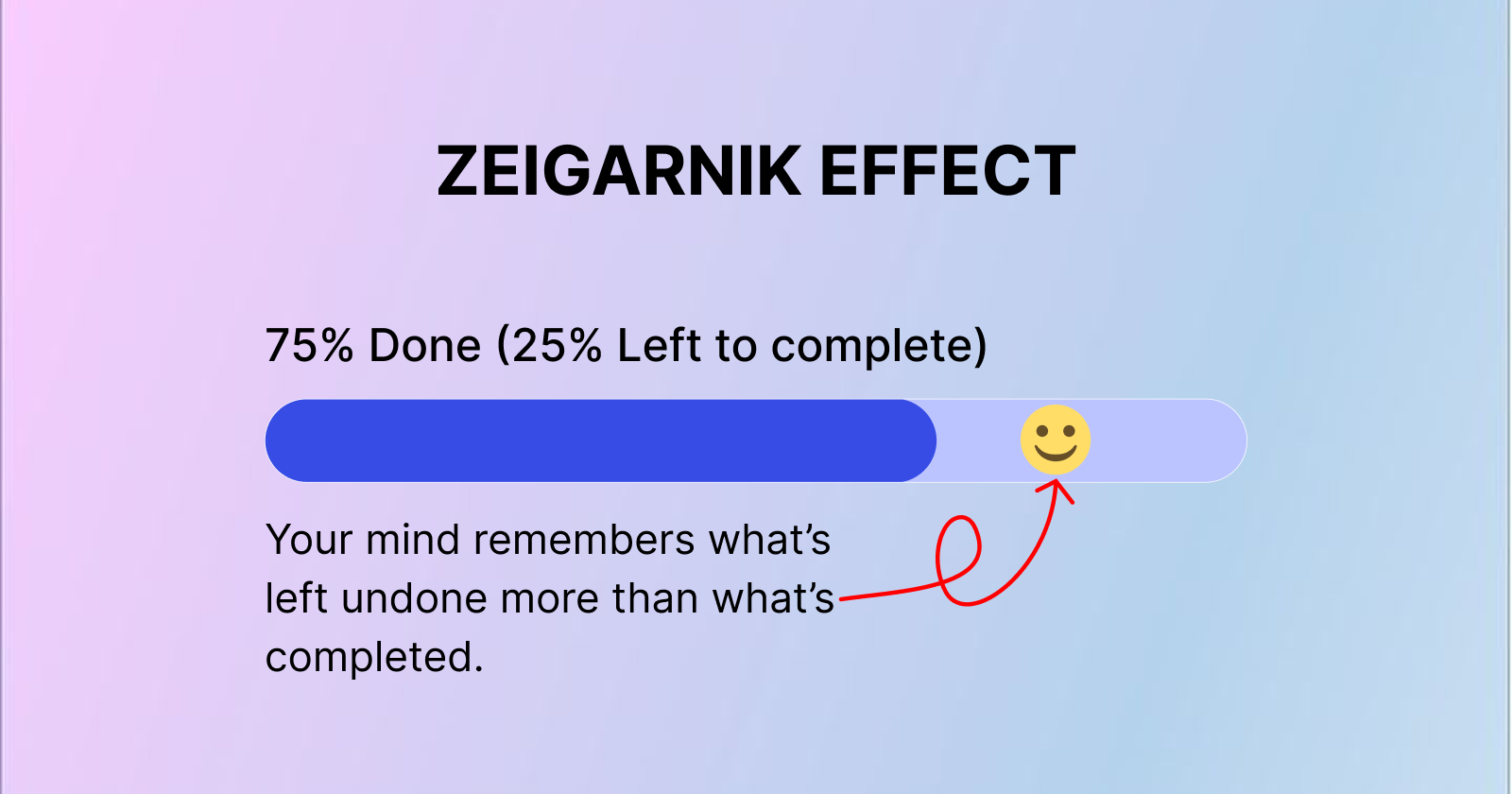Zeigarnik Effect
 Pravin Shinde
Pravin Shinde
Overview
The Zeigarnik Effect is a psychological phenomenon in which people remember unfinished or interrupted tasks more vividly than completed ones. This theory, named after the Soviet psychologist Bluma Zeigarnik, has been extensively researched and implemented in a variety of domains, including UX/UI design.
Understanding the Zeigarnik Effect can help designers improve user engagement, retention, and overall usability of digital goods. This article delves into the Zeigarnik Effect's significance in UX/UI design, as well as practical applications and real-world examples of how it might improve user experience.
What is the Zeigarnik effect?
Bluma Zeigarnik discovered this theory in the 1920s after noticing that waiters in restaurants remembered unpaid orders better than paid orders. The study revealed that incomplete projects induce a sense of stress in the brain, encouraging people to finish them to relieve mental strain.
The Zeigarnik effect can be used in digital interactions to stimulate user activities, increase task completion rates, and foster engagement. Designers might encourage users to return and complete activities by intentionally interrupting them or leaving sections undone.
Use of the Zeigarnik Effect in UX/UI Design
1. Progress Bars and Step Indicators
A progress bar provides visual tension, which encourages users to finish the task. When consumers realise that they are 80% done with account setup, they are more inclined to complete it rather than abandon it.
LinkedIn, for example, utilises a progress tracker to push users to complete their profiles by adding missing information.
2. Gamification and Reward Systems.
Gamified experiences leverage incomplete tasks to increase user engagement. Users are compelled to complete an achievement after seeing half progress.
For example, Duolingo uses streaks and achievement badges to keep people interested in language learning.
3. Unfinished forms and checkout procedures
E-commerce sites leverage the Zeigarnik Effect to recover abandoned carts. If a person begins a checkout process but does not complete it, sending a reminder email can encourage them to return.
For example, Amazon sends cart abandonment emails to remind users of their pending purchases.
4. Notifications and To-Do Lists
Notifications highlighting incomplete activities (e.g., "You have 3 unread messages") exploit the Zeigarnik Effect to encourage user action.
For example, Facebook's notification badges urge users to check for changes.
5. Loading screens and suspense elements.
Suspense in digital experiences keeps users engaged. Loading animations, teasers, and partially shown material may all build anticipation.
For example, Netflix's "Next Episode" countdown keeps consumers engaged by decreasing the time between episodes.
How to effectively use the Zeigarnik effect in UX/UI.
Avoid Overuse: While the Zeigarnik Effect is effective, overuse can lead to frustration.
Create Meaningful Interruptions: Make sure that task interruptions are natural and encourage users to return.
Provide Clear Next Steps: Users should always understand how to resume an interrupted task.
Use psychological triggers wisely: Combine with other UX principles, such as Hick's Law or Fitts' Law, for best outcomes.
Conclusion
The Zeigarnik Effect is a significant psychological theory that UX/UI designers may use to increase engagement, conversions, and retention. Understanding how unfinished activities influence user behaviour allows designers to create experiences that promote interaction and long-term engagement.
Subscribe to my newsletter
Read articles from Pravin Shinde directly inside your inbox. Subscribe to the newsletter, and don't miss out.
Written by

Pravin Shinde
Pravin Shinde
I've been working in UX and UI design for over 20 years, solving real-world problems in fintech, tourism, and other industries by creating seamless, emotionally engaging experiences that bring in user happiness and business success.